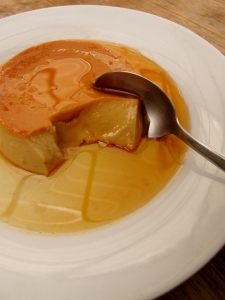I have never been much of a lunch person, preferring to rather invest my finite enthusiasm for cooking towards crafting a decent dinner.
I suspect that my mid-day apathy is rooted in my years growing up in Malaysia, where lunch was pretty much a no-brainer as it invariably meant one thing: noodles! Beef Hor Fun, wonton mee or Char Kway Teow – a noodle obsession is easy to feed when you live in what is arguably the noodle capital of the world! Alas such lunchtime bliss is now 9000km away and my choices are somewhat less appealing these days. Here in South Africa a ‘sarmie’, pie or a plate of chips are typical lunchtime fare and needless to say, I would rather do without. Nevertheless, a man has still gotta eat so I found myself falling back on old Malaysian habits and having noodles for lunch, albeit nowadays I’ve been reduced to a bowl of a jazzed-up noodles of the 2-minute variety. More recently, however, I have been trying to cut down on complex carbs so even my trusty instant noodle-lunches have been a rarity of late, which is all well and fine, but this has led me back to my initial lunchtime conundrum: what the hell’s for lunch?
For the most part this has meant soup and these days my bowl of choice is minestrone. Since my carb-cutting I’ve eaten a lot of minestrone but as delicious as it is, there is only so much soup a man can sup! Desperate to move back to solid foods I searched high and low looking for a meal that was fast, tasty, filling and, above all, didn’t sabotage my diet. I had almost given up and was about to resign myself to my soupy fate until culinary salvation arrived in the form of a Men’s Health magazine (of all things).
Okay so the featured recipe was pretty basic, but it was ripe with potential. It was exactly what I had been looking for, it was just a tad dull (after all, it was inspired by a Men’s Health recipe), but with a just a few tweaks I knew I was on to a winner! Firstly, I added some coarsely grated baby marrow (courgettes) into the mix, then some finely diced fresh red chilli and red onion and everything was topped with a dollop of plain fat-free yogurt and a crack of pepper: the perfect low carb/high protein lunch in under 5 minutes! With my preferred noodle-lunch still 9000kms away, this sounds like a near-perfect lunch to me.









